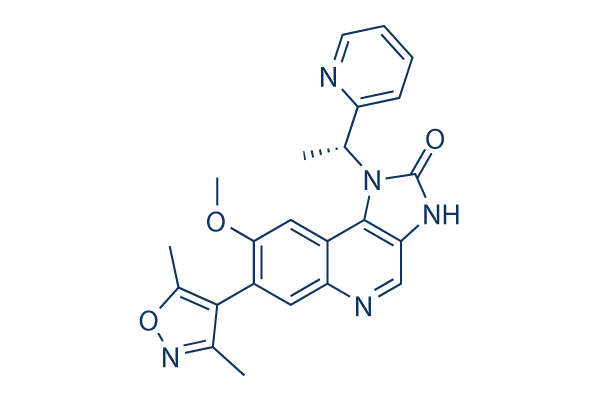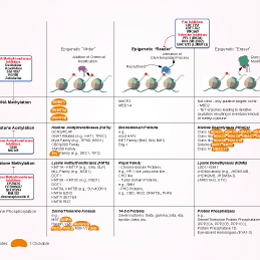
- 阻害剤
- 研究分野別
- PI3K/Akt/mTOR
- Epigenetics
- Methylation
- Immunology & Inflammation
- Protein Tyrosine Kinase
- Angiogenesis
- Apoptosis
- Autophagy
- ER stress & UPR
- JAK/STAT
- MAPK
- Cytoskeletal Signaling
- Cell Cycle
- TGF-beta/Smad
- 化合物ライブラリー
- Popular Compound Libraries
- Customize Library
- Clinical and FDA-approved Related
- Bioactive Compound Libraries
- Inhibitor Related
- Natural Product Related
- Metabolism Related
- Cell Death Related
- By Signaling Pathway
- By Disease
- Anti-infection and Antiviral Related
- Neuronal and Immunology Related
- Fragment and Covalent Related
- FDA-approved Drug Library
- FDA-approved & Passed Phase I Drug Library
- Preclinical/Clinical Compound Library
- Bioactive Compound Library-I
- Bioactive Compound Library-II
- Kinase Inhibitor Library
- Express-Pick Library
- Natural Product Library
- Human Endogenous Metabolite Compound Library
- Alkaloid Compound LibraryNew
- Angiogenesis Related compound Library
- Anti-Aging Compound Library
- Anti-alzheimer Disease Compound Library
- Antibiotics compound Library
- Anti-cancer Compound Library
- Anti-cancer Compound Library-Ⅱ
- Anti-cancer Metabolism Compound Library
- Anti-Cardiovascular Disease Compound Library
- Anti-diabetic Compound Library
- Anti-infection Compound Library
- Antioxidant Compound Library
- Anti-parasitic Compound Library
- Antiviral Compound Library
- Apoptosis Compound Library
- Autophagy Compound Library
- Calcium Channel Blocker LibraryNew
- Cambridge Cancer Compound Library
- Carbohydrate Metabolism Compound LibraryNew
- Cell Cycle compound library
- CNS-Penetrant Compound Library
- Covalent Inhibitor Library
- Cytokine Inhibitor LibraryNew
- Cytoskeletal Signaling Pathway Compound Library
- DNA Damage/DNA Repair compound Library
- Drug-like Compound Library
- Endoplasmic Reticulum Stress Compound Library
- Epigenetics Compound Library
- Exosome Secretion Related Compound LibraryNew
- FDA-approved Anticancer Drug LibraryNew
- Ferroptosis Compound Library
- Flavonoid Compound Library
- Fragment Library
- Glutamine Metabolism Compound Library
- Glycolysis Compound Library
- GPCR Compound Library
- Gut Microbial Metabolite Library
- HIF-1 Signaling Pathway Compound Library
- Highly Selective Inhibitor Library
- Histone modification compound library
- HTS Library for Drug Discovery
- Human Hormone Related Compound LibraryNew
- Human Transcription Factor Compound LibraryNew
- Immunology/Inflammation Compound Library
- Inhibitor Library
- Ion Channel Ligand Library
- JAK/STAT compound library
- Lipid Metabolism Compound LibraryNew
- Macrocyclic Compound Library
- MAPK Inhibitor Library
- Medicine Food Homology Compound Library
- Metabolism Compound Library
- Methylation Compound Library
- Mouse Metabolite Compound LibraryNew
- Natural Organic Compound Library
- Neuronal Signaling Compound Library
- NF-κB Signaling Compound Library
- Nucleoside Analogue Library
- Obesity Compound Library
- Oxidative Stress Compound LibraryNew
- Phenotypic Screening Library
- PI3K/Akt Inhibitor Library
- Protease Inhibitor Library
- Protein-protein Interaction Inhibitor Library
- Pyroptosis Compound Library
- Small Molecule Immuno-Oncology Compound Library
- Mitochondria-Targeted Compound LibraryNew
- Stem Cell Differentiation Compound LibraryNew
- Stem Cell Signaling Compound Library
- Natural Phenol Compound LibraryNew
- Natural Terpenoid Compound LibraryNew
- TGF-beta/Smad compound library
- Traditional Chinese Medicine Library
- Tyrosine Kinase Inhibitor Library
- Ubiquitination Compound Library
-
Cherry Picking
You can personalize your library with chemicals from within Selleck's inventory. Build the right library for your research endeavors by choosing from compounds in all of our available libraries.
Please contact us at info@selleck.co.jp to customize your library.
You could select:
- FDA-approved Drug Library
- FDA-approved & Passed Phase I Drug Library
- Preclinical/Clinical Compound Library
- Bioactive Compound Library-I
- Bioactive Compound Library-II
- Kinase Inhibitor Library
- Express-Pick Library
- Natural Product Library
- Human Endogenous Metabolite Compound Library
- Covalent Inhibitor Library
- FDA-approved Anticancer Drug LibraryNew
- Highly Selective Inhibitor Library
- HTS Library for Drug Discovery
- Metabolism Compound Library
- 抗体
- 新製品
- お問い合わせ
I-BET151 (GSK1210151A)
I-BET151 (GSK1210151A) is a novel selective BET inhibitor for BRD2, BRD3 and BRD4 with IC50 of 0.5 μM, 0.25 μM, and 0.79 μM in cell-free assays, respectively.

CAS No. 1300031-49-5
文献中Selleckの製品使用例(56)
製品安全説明書
現在のバッチを見る:
純度:
99.99%
99.99
I-BET151 (GSK1210151A)関連製品
シグナル伝達経路
Epigenetic Reader Domain阻害剤の選択性比較
Cell Data
| Cell Lines | Assay Type | Concentration | Incubation Time | 活性情報 | PMID |
|---|---|---|---|---|---|
| HT-29 | Function assay | 0.3125 uM to 5 uM | 24 hrs | Inhibition of BRD4 in human HT-29 cells assessed as reduction in c-Myc protein expression at 0.3125 uM to 5 uM uM after 24 hrs by Western blotting method | 25559428 |
| H929 | Apoptosis assay | ~1 μM | induces cell apoptosis | 24335499 | |
| RPMI8226 | Function assay | ~1 μM | induces cell cycle arrest | 24335499 | |
| 他の多くの細胞株試験データをご覧になる場合はこちらをクリックして下さい | |||||
生物活性
| 製品説明 | I-BET151 (GSK1210151A) is a novel selective BET inhibitor for BRD2, BRD3 and BRD4 with IC50 of 0.5 μM, 0.25 μM, and 0.79 μM in cell-free assays, respectively. | ||||||
|---|---|---|---|---|---|---|---|
| 特性 | Optimized to retain excellent BET target potency and selectivity while enhancing the in vivo pharmacokinetics and terminal half-life to enable prolonged in vivo studies. | ||||||
| Targets |
|
| In Vitro | ||||
| In vitro | I-BET151 exhibits potent selectivity over an extensive range of diverse protein types such as COX-2, P450, Aurora B, GSK3β, PI3K-γ, GPCR, ion channels, and transporters. Similar to I-BET762 (GSK525762A), I-BET151 displays potent binding affinity to BRD2, BRD3 and BRD4 with KD of 0.02-0.1 μM, and significantly inhibits lipopolysaccharide-stimulated IL-6 cytokine production in human peripheral blood mononuclear cells (PBMC) and whole blood (WB) as well as rat WB with IC50 of 0.16 μM, 1.26 μM, and 1.26 μM, respectively. I-BET151 (0.5 or 5 μM) inhibits the binding of BETs (BRD2, BRD3, BRD4, and BRD9) but not the binding of 23 other bromodomain proteins in HL60 nuclear extract to acetylated histone peptides. I-BET151 has potent efficacy against cell lines harboring different MLL-fusions such as MV4;11, RS4;11, MOLM13, and NOMO1 cells with IC50 of 15-192 nM. Consistently, I-BET151 completely ablates the colony-forming potential of MLL-fusion-driven leukaemias (MOLM13) but not leukaemias driven by tyrosine kinase activation (K562). I-BET151 also displays potent efficacy in both liquid culture and clonogenic assays using primary murine progenitors transformed with either MLL-ENL or MLL-AF9. I-BET151 treatment significantly induces apoptosis and prominent G0/G1 arrest in MLL-fusion cell lines driven by distinct MLL fusions (MOLM13 and MV4;11 containing MLL-AF9 and MLL-AF4, respectively) but not the K562 cells, probably due to the inhibition of transcription of BCL2, C-MYC and CDK6 by blocking the recruitment of BRD3/4, PAFc and SEC components into transcriptional start site (TSS). [1] | |||
|---|---|---|---|---|
| Kinase Assay | Fluorescence anisotropy (FP) ligand displacement assay | |||
| All components are dissolved in buffer of composition 50 mM HEPES pH 7.4, 150 mM NaCl and 0.5 mM CHAPS with final concentrations of BRD 2/3/4 75 nM, fluorescent ligand 5 nM. 10 μL of this reaction mixture is added using a micro multidrop to wells containing 100 nL of various concentrations of I-BET151 or DMSO vehicle (1% final) in Greiner 384 well Black low volume microtitre plate and equilibrated in the dark for 60 minutes at room temperature. Fluorescence anisotropy is read in Envision (lex = 485 nm, lEM = 530 nm; Dichroic = 505 nM). | ||||
| 細胞実験 | 細胞株 | MV4;11, MOLM13, NOMO1, RS4;11, HEL, HL60 and K562 | ||
| 濃度 | Dissolved in DMSO, final concentrations ~100 μM | |||
| 反応時間 | 24, or 72 hours | |||
| 実験の流れ | Cells are exposed to various concentrations of I-BET151 for 24 or 72 hours in 384-well or 96-well plates. For cell growth inhibition assays, plates are added with CellTiter-Glo reagent using a volume equivalent to the cell culture volume in the wells, shaken for approximately 2 minutes and chemiluminescent signal is read on the Analyst GT or EnVision Plate Reader. For cell proliferation assays, CellTiter-Aqueous One is added to each well and plates are incubated for 4 hours at 37 °C. Absorbance is read at 490 nm on a SpectraMax Gemini reader |
|||
| 実験結果図 | Methods | Biomarkers | 結果図 | PMID |
| Western blot | α-SMA / Fibronectin / Collagen-1 FoxM1 / AURKB / Survivin / cyclin B / PLK1 HP1α / HP1β / HP1γ |

|
27732564 | |
| In Vivo | ||
| In Vivo | Administration of I-BET151 at 30 mg/kg/day significantly inhibits tumor growth of murine MLL-AF9 and human MLL-AF4 leukaemia in mice, and provides marked survival benefit. [1] | |
|---|---|---|
| 動物実験 | 動物モデル | NOD-SCID mice injected intravenously with MV4;11 cells, and C57BL/6 mice injected intravenously with MLL-AF9 cells |
| 投与量 | ~30 mg/kg/day | |
| 投与経路 | Intraperitoneal injection | |
化学情報
| 分子量 | 415.44 | 化学式 | C23H21N5O3 |
| CAS No. | 1300031-49-5 | SDF | Download I-BET151 (GSK1210151A) SDFをダウンロードする |
| Smiles | CC1=C(C(=NO1)C)C2=C(C=C3C(=C2)N=CC4=C3N(C(=O)N4)C(C)C5=CC=CC=N5)OC | ||
| 保管 | |||
|
In vitro |
DMSO : 83 mg/mL ( (199.78 mM); 吸湿したDMSOは溶解度を減少させます。新しいDMSOをご使用ください。) Ethanol : 83 mg/mL Water : Insoluble |
モル濃度計算器 |
|
in vivo Add solvents to the product individually and in order. |
投与溶液組成計算機 | ||||
| Clear solution |
5%DMSO
Corn oil
|
4.5mg/ml (10.83mM) | Taking the 1 mL working solution as an example, add 50 μL of 90 mg/ml clear DMSO stock solution to 950 μL of corn oil and mix evenly. The mixed solution should be used immediately for optimal results. | ||
実験計算
投与溶液組成計算機(クリア溶液)
ステップ1:実験データを入力してください。(実験操作によるロスを考慮し、動物数を1匹分多くして計算・調製することを推奨します)
mg/kg
g
μL
匹
ステップ2:投与溶媒の組成を入力してください。(ロット毎に適した溶解組成が異なる場合があります。詳細については弊社までお問い合わせください)
% DMSO
%
% Tween 80
% ddH2O
%DMSO
%
計算結果:
投与溶媒濃度: mg/ml;
DMSOストック溶液調製方法: mg 試薬を μL DMSOに溶解する(濃度 mg/mL, 注:濃度が当該ロットのDMSO溶解度を超える場合はご連絡ください。 )
投与溶媒調製方法:Take μL DMSOストック溶液に μL PEG300,を加え、完全溶解後μL Tween 80,を加えて完全溶解させた後 μL ddH2O,を加え完全に溶解させます。
投与溶媒調製方法:μL DMSOストック溶液に μL Corn oil,を加え、完全溶解。
注意:1.ストック溶液に沈殿、混濁などがないことをご確認ください;
2.順番通りに溶剤を加えてください。次のステップに進む前に溶液に沈殿、混濁などがないことを確認してから加えてください。ボルテックス、ソニケーション、水浴加熱など物理的な方法で溶解を早めることは可能です。
技術サポート
ストックの作り方、阻害剤の保管方法、細胞実験や動物実験の際に注意すべき点など、製品を取扱う時に問い合わせが多かった質問に対しては取扱説明書でお答えしています。
他に質問がある場合は、お気軽にお問い合わせください。
* 必須
Tags: I-BET151 (GSK1210151A)を買う | I-BET151 (GSK1210151A) ic50 | I-BET151 (GSK1210151A)供給者 | I-BET151 (GSK1210151A)を購入する | I-BET151 (GSK1210151A)費用 | I-BET151 (GSK1210151A)生産者 | オーダーI-BET151 (GSK1210151A) | I-BET151 (GSK1210151A)化学構造 | I-BET151 (GSK1210151A)分子量 | I-BET151 (GSK1210151A)代理店

